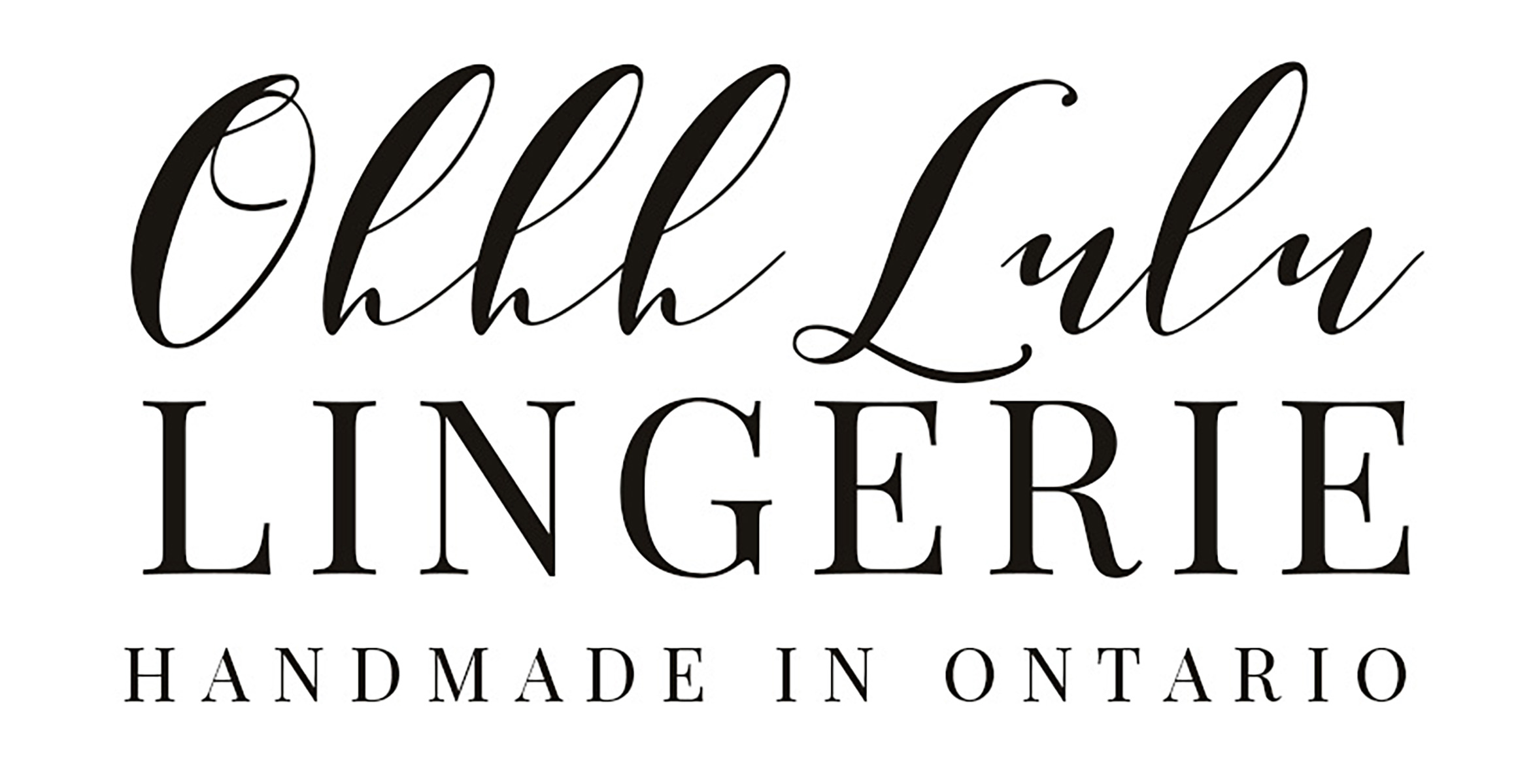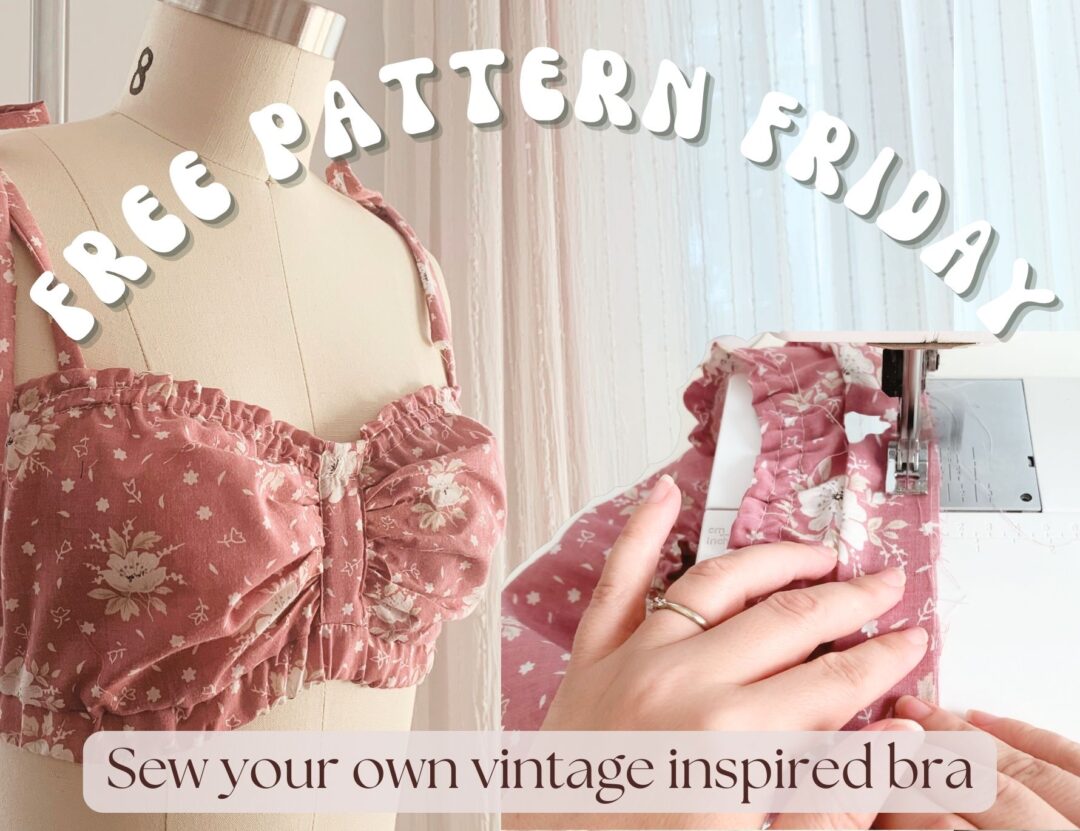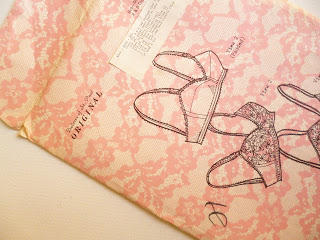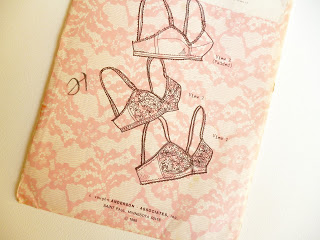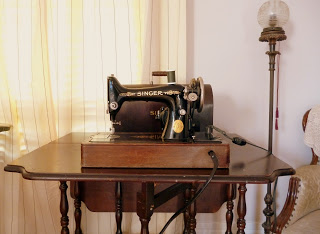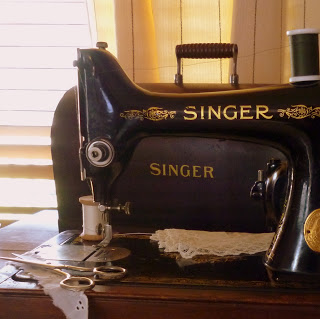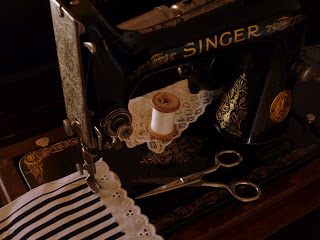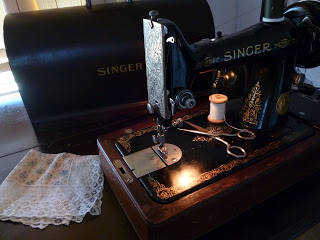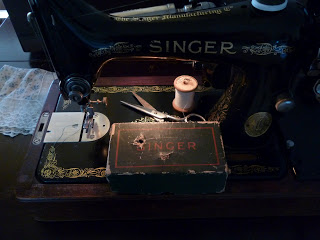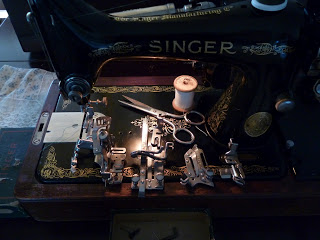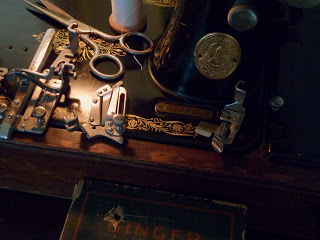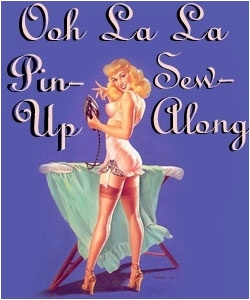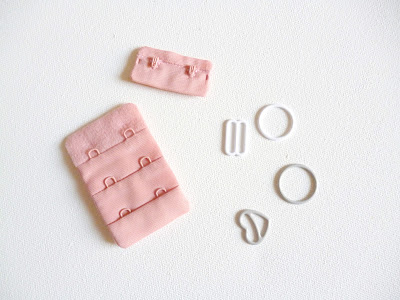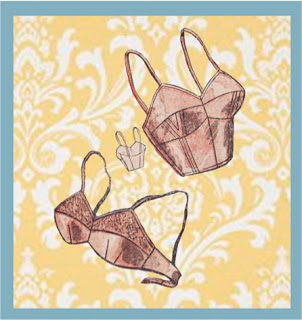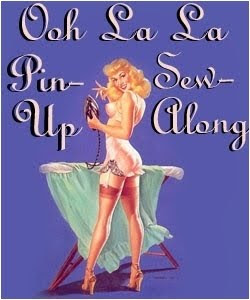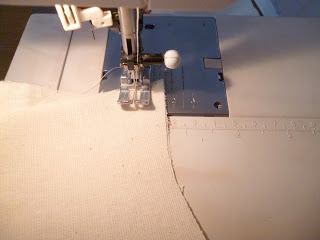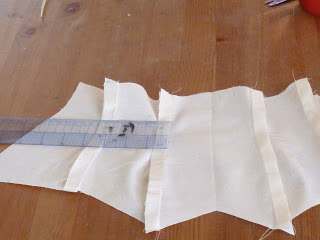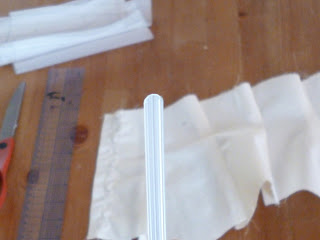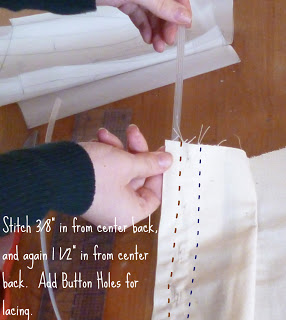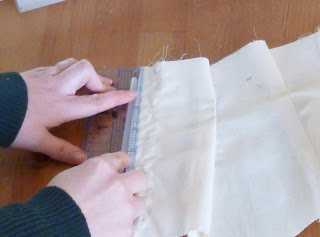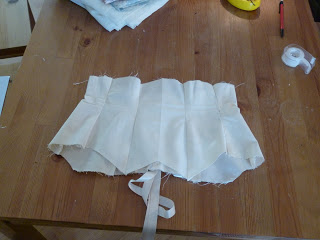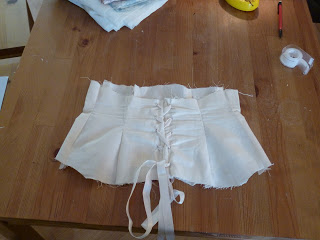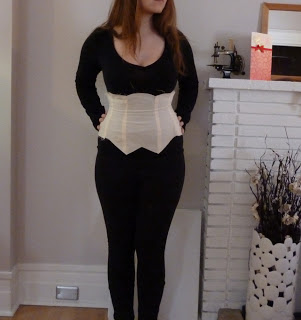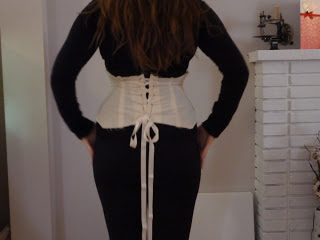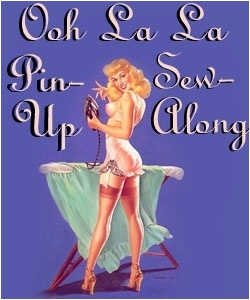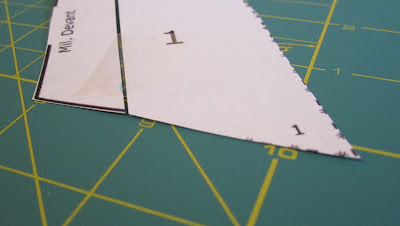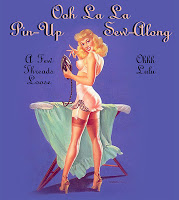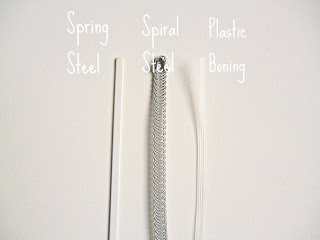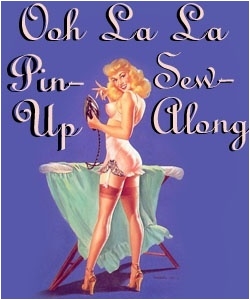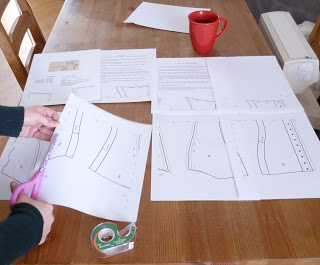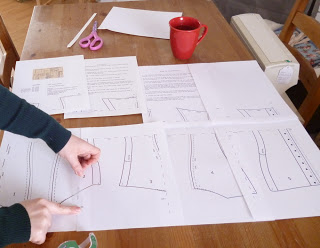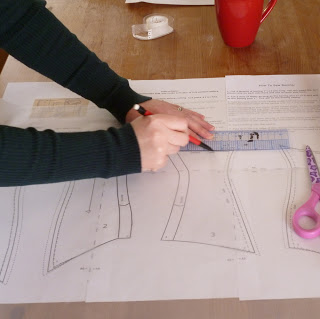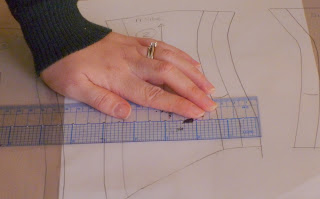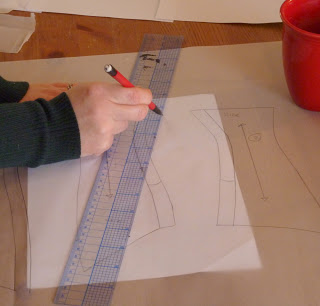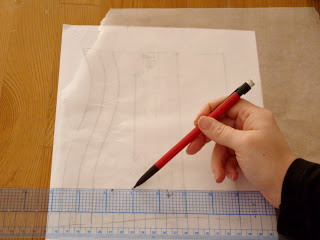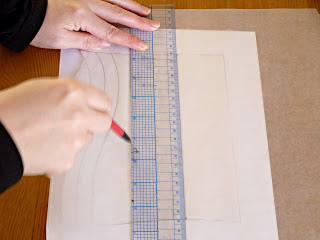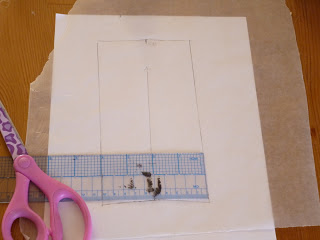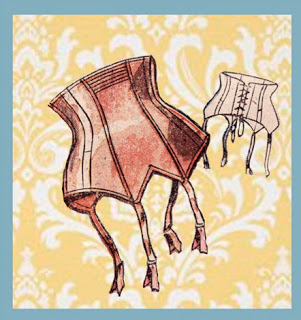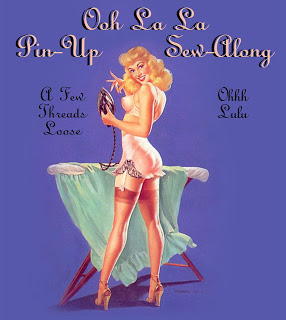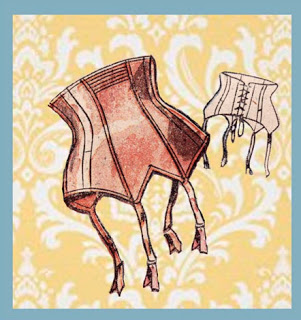I shared my ultimate cottagecore lingerie set on my YouTube channel back in August and really enjoyed getting back to sewing lingerie with woven fabric. That’s kind of where I got my start!
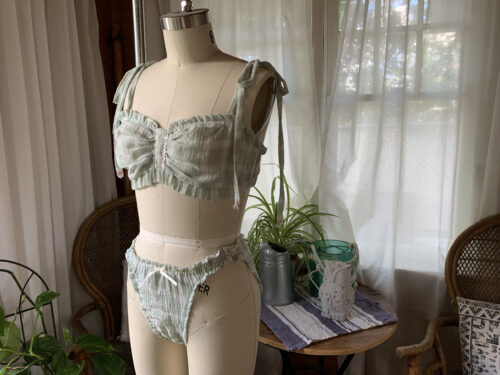
I love historical clothing. I used to make all kinds of Victorian costumes and corsets in fashion school. All of the details and the drama are just so fun… and I’ve always been particularly drawn to what people used to wear under their clothes. I’m not sure it’s something most people think about!
When we think of underwear and lingerie we usually think of light, stretchy fabrics. But elastic is a pretty new technology! At one time, not that long ago, most lingerie and even a lot of swimwear was made out of woven fabrics. If you’re a collector of vintage or antique clothes or sewing patterns, you’ll be well aware of this!
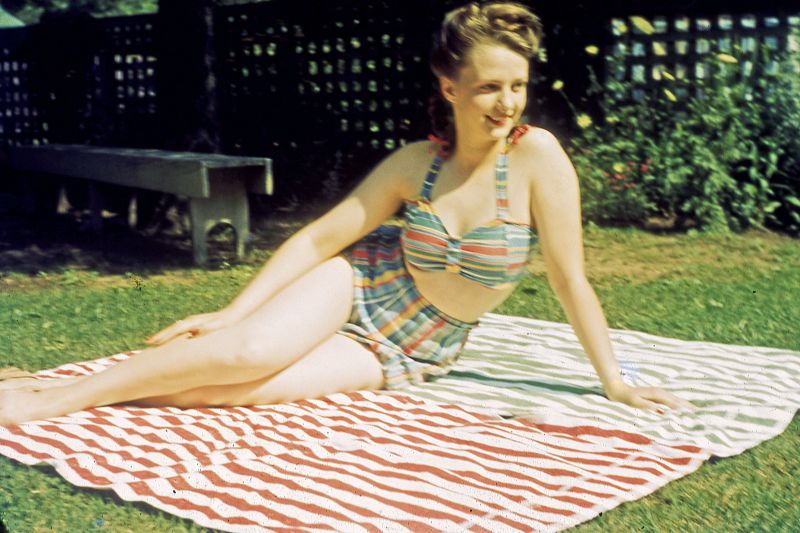
One of the sewing patterns in my personal collection is for an original 1940’s bra top. I believe it was originally meant for beachwear, but I thought it lent itself well to lingerie. I used the basic style line as my inspiration for the August Bra, but added elasticized edges, ruffles, and tie on straps.
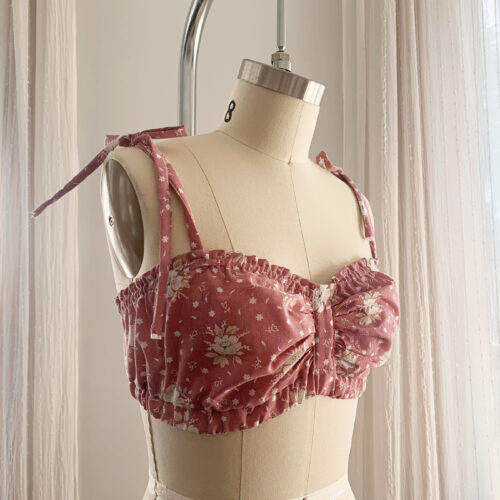
I decided to release this pattern in two formats. You can get the pattern for FREE. Yep, free! The free version doesn’t have a full set of written instructions, but I do have an indepth video on YouTube walking you through the steps. If you prefer a more traditional format, you can purchase an ad-free version that includes the pattern and written instructions with full colour photos in my traditional PDF format.
Fabric selection is important for this bra. Look for fabrics that are lightweight and with a good drape. If you are online shopping, search for fabrics that include rayon, viscose or bamboo, as they are all really drapable fibres. Weaves like challis, charmeuse, and gauze all have a looser weave that are perfectly suited for this pattern! Really tightly woven fabric like poplin could result in a slightly smaller fit. So, if you have a really tightly woven fabric, I’d suggest sizing up.
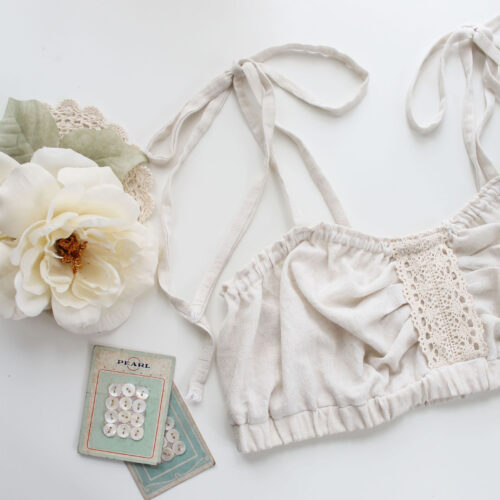
I’m excited to see what you come up with using my pattern. Tag me on the socials, @ohhhlulu everywhere. I’ll also be releasing a bottom to go with it in the next few days!
